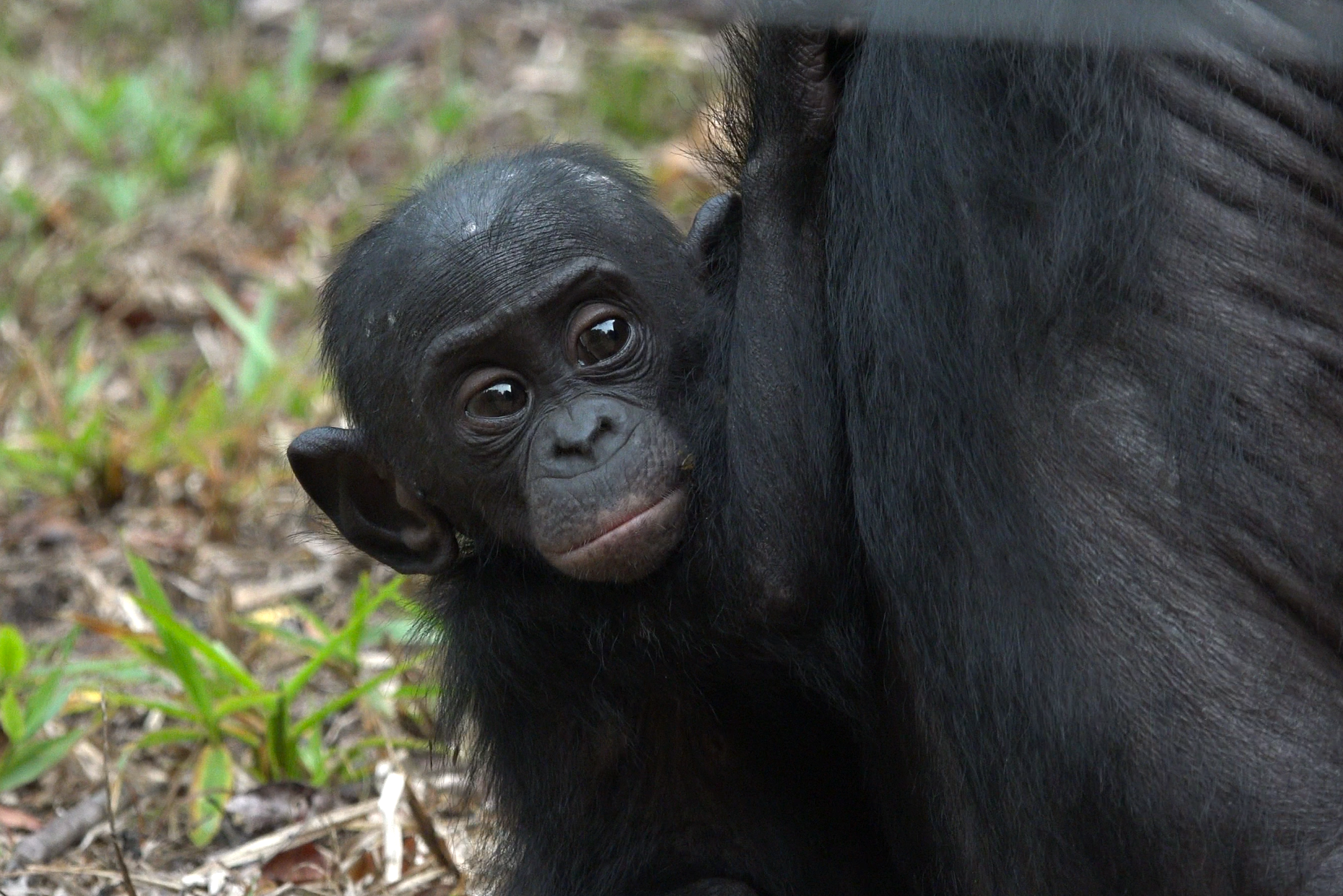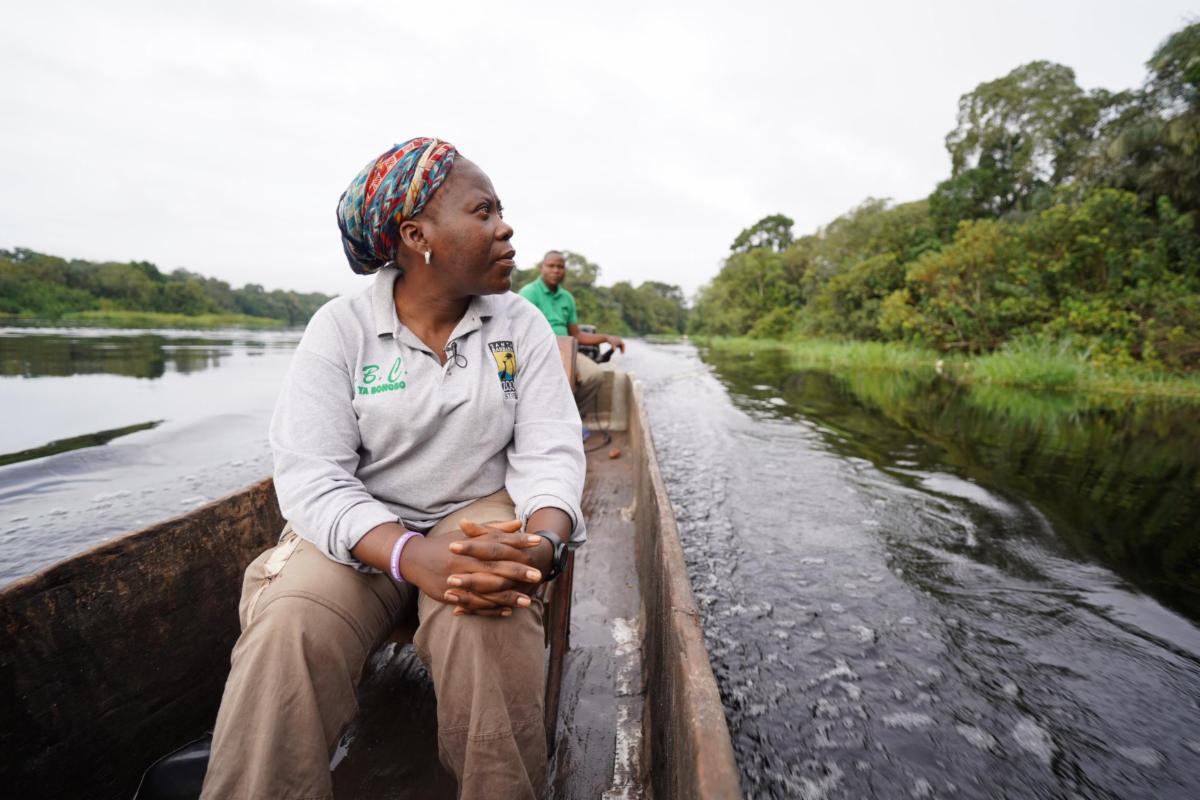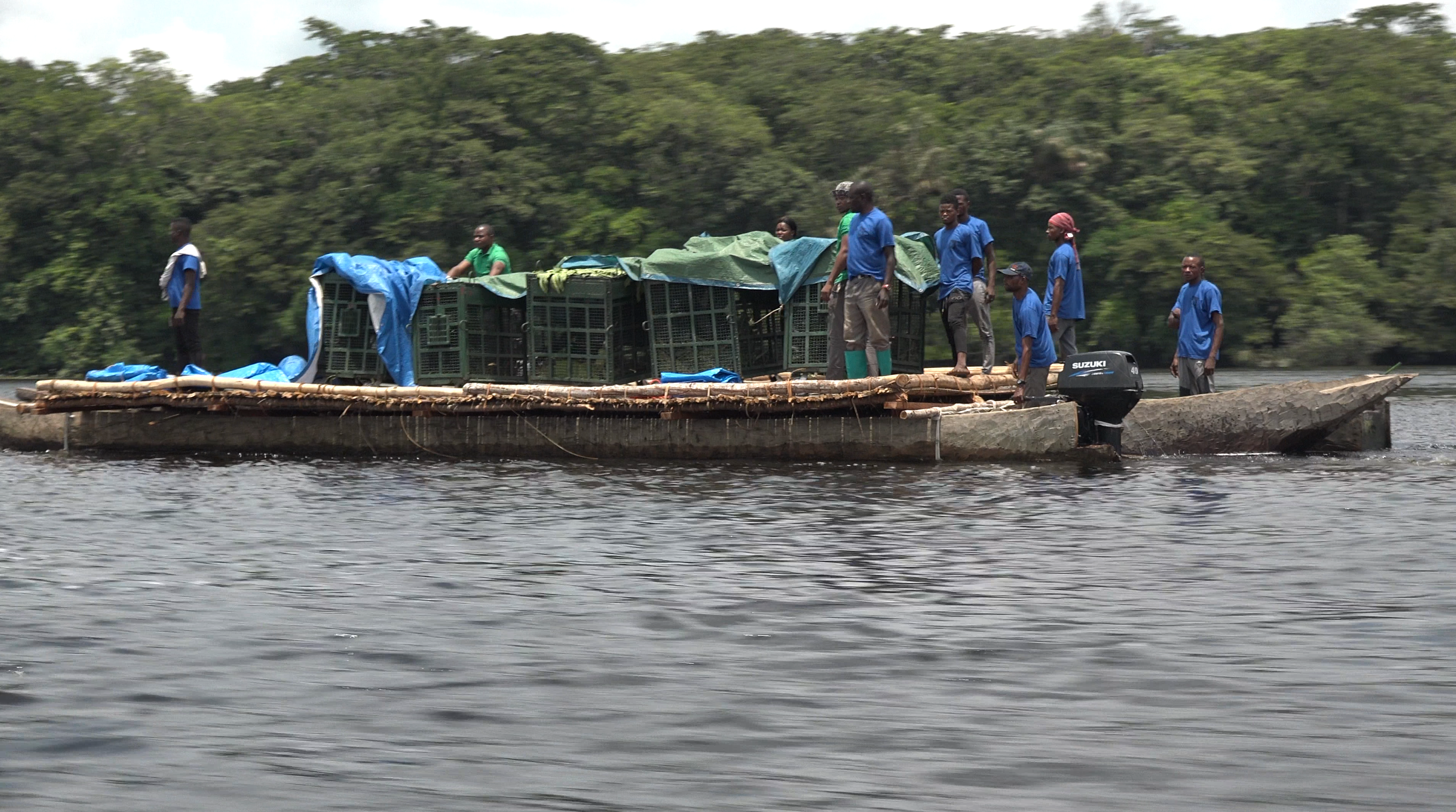Rewilding Bonobos: 14 Bonobos Return to the Wild
After years of planning and preparation, 14 bonobos are back where they belong in the lush rainforest of equatorial Africa!
A guest blog post from Friends of Bonobos/Lola ya Bonobo – written by Louisa Davison
A rare conservation achievement
The rewilding took place in March 2022 at Ekolo ya Bonobo Community Reserve, a 120,000-acre protected area deep in the Congo rainforest. It’s just the second time in history bonobos have been returned to the wild, and both times it was done by Lola ya Bonobo, a PASA member in The Democratic Republic of Congo. Lola ya Bonobo is operated by a Congolese conservation organization called Friends of Bonobos of the Congo/Amis des Bonobos du Congo (ABC).
“I feel very proud of the team,” said Fanny Minesi, general director of ABC. “Rewilding a group of bonobos that were rehabilitated for years is incredibly difficult to organize, to plan, and even when you plan very well, sometimes it just doesn’t work. It takes a whole team and they have done an amazing job.
“At the end of the day this is what our organization is working for – to put bonobos back into the wild where they are protected for the future.”
Even though the group is now on its own, “that’s not the end of the story,” said Cintia Garia, the director of Ekolo ya Bonobo reserve at the time. “We have to make sure they are protected.” In fact, just after the release took place, Garai oversaw training for a new group of eco-guards.
A second chance
Most of the released bonobos have come full circle. They began life as victims of wildlife traffickers, orphaned as babies when their families were killed for wildmeat. But the orphans got a second chance when they were rescued by ABC and brought to Lola ya Bonobo sanctuary for expert care and rehabilitation.
The 2022 release group included matriarch Maya and her three children. Maya was the second bonobo rescued by sanctuary founder Claudine André more than 25 years ago, so the rewilding is a bittersweet farewell.
“Some of the bonobos I have known since I was a kid,” says Minesi, who is André’s daughter. “But Maya’s place is in the forest. This is the day we worked for – for decades – to put bonobos back in the wild where they are protected.

Baby bonobo Lokumu clings to her mom, Lisala, the day after release. Photo: Friends of Bonobos/Cintia Garaiorn
The long road from the sanctuary to the forest
The bonobos’ journey to Ekolo ya Bonobo Community Reserve began in 2018, when they left Lola ya Bonobo Sanctuary in Kinshasa, to travel to Totaka Island. Getting the bonobos to Totaka involved a 800km journey by plane, trucks, and specially built rafts.
Totaka was intended as a temporary quarantine site to ensure the bonobos were fit and healthy for release into Ekolo, where the first group had been released in 2009. The time on Totaka also allows the bonobos to get comfortable with life in the wild.
But no one could have predicted it would be four years and two newborn bonobos before the group could be successfully moved across the river to Ekolo. An Ebola outbreak near the reserve, legal and technical challenges, and the global Covid pandemic all delayed the final stage of the move to Ekolo ya Bonobo. Then in 2021, with everything finally ready for the big moving day, the bonobos themselves put a spanner in the works.

Suzy Kwetuenda, bonobo wellness coordinator, arrives by pirogue at Ekolo. Photo: Friends of Bonobos/Leon Haberkorn
Strong apes, weak welds
Rewilding is expensive and complex, and there is no guarantee of success. It’s only possible with the support of donors across the world. The team must follow detailed IUCN best practices for great ape reintroduction. The release itself then involves lots of complicated steps, all of which need to be seamless.
In April 2021, the paperwork complete and filed, Suzy Kwetuenda, director of wellness, arrived on the island. Her primary task was to get the bonobos used to entering the transport cages calmly with a minimum of stress or excitement. The bonobos were introduced to the tunnels and cages and, by mid-May, they seemed happy coming and going. Everything seemed on track. ABC vets Jonas Mukamba and Raphael Belais arrived, and worked on fitting radio tracking collars on some of the dominant female apes from both groups.
D-Day. In the beginning, things were going well – all the bonobos were in the transfer tunnel, the doors were about to be closed but then – disaster. One of the young males became excited, violently shook a door and twisted the iron bar which attached the door to the tunnel. Other bonobos became agitated and the staff feared the doors would break and the scared bonobos escape.
There was no choice but to reopen the doors and allow the bonobos to dart back into the island forest.
The team bought materials from Basankusu and worked through the night under headlamps to make repairs. But to no avail. The trust built up with the bonobos over two months was gone and the apes could not be persuaded back into the tunnels.
With the rainy season fast approaching in the rainforest swamps of Ekola ya Bonobo, there was no time to try again that year. Totaka would be home to the 14 bonobos for another year, another year of supplying fresh fruit, water, and veterinary care.
2022: Time to try again
In March 2022 – after more fundraising, more paperwork, and more repairs to the tunnels and cages which degrade quickly in the constant humidity, more supplies, electricity generators and skilled staff brought in, and rafts built on pirogues to take the bonobos across the river – the team and the bonobos were ready to try again.
On the big day, tarps were placed around the cages to keep the bonobos as calm as possible. Once the bonobos were inside the cages, the vets blew tranquiliser darts at each one, including the babies, and gave them a thorough check up. The cages were stronger than before but now very heavy. Dozens of local people recruited to help move the bonobos whispered, “one, two, three – lift!”
The sleeping apes were ready for the final, historic leg of the journey. Little did the apes know their trip across the river would soon be followed by some very happy singing by ABC staff!
Everything went according to plan and Maya and the other 13 bonobos are back where they belong in the Congo rainforest. Poachers took them out of the forest as babies, before they were rescued and rehabilitated by ABC Friends of Bonobos, and now they are home in the 120,000-acre protected area of Ekola.
The released bonobos are adjusting well so far, said Suzy. Kubulu, a male bonobo from the 2009 release, joined the new group.

Transporting Bonobos from Totaka to Ekolo. Photo: Friends of Bonobos
It is very hard to put a bonobo orphan back into the wild after the bonobo grows up with other bonobos who went through the same fate, Garai says. She’s thrilled it was a success.
“It is really moving to be there and see how these individual, bonobo persons get back into the wild. To me personally this is the main meaning of the reintroduction of bonobos: The message is that a huge enthusiastic local, national, and international group of people worked together for many years to put these few bonobos back in the forest. That might make people think that there must be something [special] in this species.
“I hope that at some point, we no longer have to do reintroductions because poaching of bonobos stops,” Garai says.
